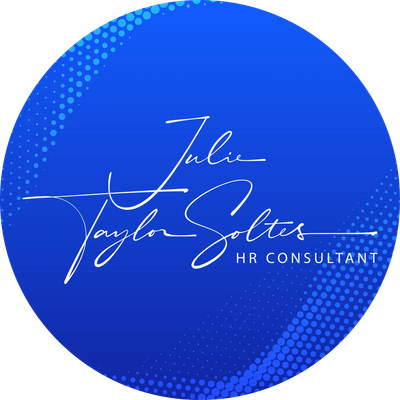How an Employee Can Use a Job Description Against You

The hidden HR document that can protect — or expose — your business. Most small business owners treat job descriptions as a formality: something you create during hiring, tuck into a file, and forget about. But that simple document can carry significant legal and operational weight — and if it’s outdated or inaccurate, it can be used against you in ways that surprise even experienced business owners. In disputes over pay, accommodations, discrimination, or wrongful termination, the job description often becomes a key piece of evidence. Whether it helps you or hurts you depends on how well it reflects reality. Let’s break this down clearly so you can understand where the risks lie — and how to protect your business.
📝 1. Wage & Hour Claims: “But my job description says…”
Under the Fair Labor Standards Act (FLSA), employees must be correctly classified as either exempt (not eligible for overtime) or non-exempt (eligible for overtime). This classification hinges on actual job duties, not titles or assumptions. Here’s the problem: Many small businesses rely on generic or inflated job descriptions that don’t match what the employee actually does day-to-day. For example:
- A job description labels someone as a “Manager,” implying exempt status, but the employee spends most of their time stocking shelves and running the cash register.
- The description lists high-level decision-making responsibilities, but in practice, the employee has no supervisory authority.
- The description fails to include non-managerial tasks that make up the bulk of the work.
👉 Why this matters:
If an employee files a wage claim arguing they were misclassified, their job description may support their case — especially if it contradicts your classification or payroll practices. The Department of Labor (DOL) and courts often view job descriptions as evidence of the employer’s understanding of the role. The result: You could face back pay for unpaid overtime, liquidated damages, and attorney’s fees. For small businesses, this can be a five-figure problem that started with a few careless paragraphs.
🦽 2. ADA & Accommodation Claims: Job Descriptions Define “Essential Functions”
The Americans with Disabilities Act (ADA) requires employers to provide reasonable accommodations to employees with disabilities, so they can perform the essential functions of their jobs. The key phrase here is “essential functions.” How are they determined? Your job description is one of the primary sources. Common mistakes that create risk include:
- Listing every imaginable task to “cover your bases,” including non-essential or outdated duties.
- Omitting truly essential physical or cognitive requirements.
- Using vague or generic language that doesn’t reflect the actual role.
👉 Why this matters:
If an employee requests accommodation and your job description doesn’t accurately describe the essential functions, you may lose the ability to defend your decisions. For example:
- If you deny an accommodation, the employee can argue the function in question isn’t essential, and your own job description may support their claim.
- If you include non-essential tasks, you may accidentally obligate yourself to accommodate things you didn’t intend.
- If the description doesn’t reflect reality, it can undermine your credibility during an EEOC investigation.
The result: Missteps here can lead to expensive accommodation disputes, discrimination claims, or settlements — all because the job description wasn’t clear.
📈 3. Wrongful Termination & Discrimination Claims
When you terminate or discipline an employee, your reasons must align with documented expectations — and the job description plays a key role. Here’s how it can work against you:
- You terminate someone for failing to perform a task that isn’t even mentioned in their job description.
- You evaluate performance based on criteria that were never documented.
- You change responsibilities over time but never update the job description, making your expectations unclear.
- An employee claims they were fired or disciplined for reasons unrelated to their actual job duties.
👉 Why this matters:
In discrimination or wrongful termination claims, agencies and attorneys look for inconsistencies between your stated reasons for termination and the official documentation. A mismatch between the job description and reality gives employees leverage to argue that your actions were pretextual, retaliatory, or discriminatory. The result: Even if your reasons were valid, poor documentation can make your case much harder to defend.
🧾 4. Performance Reviews & Promotions: Employees Will Use It to Their Advantage
Employees don’t forget what’s in their job description — especially when it benefits them. In fact, savvy employees will often keep copies of their job descriptions to use strategically. Here’s how:
- 📈 Promotion leverage: Employees point to extra duties they’ve taken on that weren’t updated in their job description to argue for a raise or title change.
- 📝 Performance challenges: If a review critiques them on tasks not listed in their job description, they can claim the expectations were unclear or unfair.
- 🙅 Task refusal: Employees sometimes decline new responsibilities by saying “that’s not in my job description.” And if the description is outdated, they may technically be right.
👉 Why this matters:
When job descriptions aren’t current, you lose control of the narrative around roles and performance. What should be a simple conversation about growth and expectations can turn into a tense standoff — or worse, a formal complaint. The result: Inaccurate job descriptions create gray areas that employees can exploit during performance discussions, disputes, or negotiations.
🧭 5. Investigations & Legal Proceedings: Job Descriptions Become Evidence
In almost every type of employment dispute or investigation, job descriptions are among the first documents requested. This includes:
- Wage & hour investigations by the DOL or state agencies
- EEOC discrimination complaints
- ADA accommodation disputes
- Workers’ compensation claims
- Wrongful termination lawsuits
👉 Why this matters:
If your job descriptions don’t match reality, they can undermine your credibility as an employer. Investigators and attorneys will compare what’s on paper with actual practices, employee statements, and performance records. The result: A poorly maintained job description can turn a defensible situation into a losing case.
✅ How to Protect Your Business
The good news is: this is absolutely fixable. A few proactive steps can turn job descriptions from a liability into a powerful risk management tool:
- 🗓 Review regularly.
Update job descriptions at least annually, and any time responsibilities change. Make this part of your end-of-year or performance review process. - ✍️ Be specific and accurate.
Focus on essential functions, required skills, physical requirements, and decision-making authority. Avoid generic, catch-all phrases that don’t reflect reality. - 🔄 Align with practice.
Make sure what’s in the job description matches what employees actually do day-to-day. If it doesn’t, either change the description or adjust the work. - 📝 Integrate with HR processes.
Use job descriptions consistently during recruiting, onboarding, performance reviews, promotions, and terminations. - 🎓 Train your managers.
Supervisors are often the first to add new duties. Train them to flag changes early so HR can keep job descriptions accurate. - 🚫 Skip the “copy-paste” templates.
Generic job descriptions may be fast, but they don’t reflect your unique workplace. Tailored, thoughtful descriptions are worth the investment.
🚀 Final Thought
A job description might look like simple paperwork, but in a dispute, it can carry real legal weight. The question isn’t whether your job descriptions exist — it’s whether they would support your position or the employee’s if challenged. Keeping them current, accurate, and aligned with actual practice is one of the simplest and most effective ways to reduce risk, improve communication, and strengthen your HR foundation.
✨ Need Help Reviewing Your Job Descriptions?
At JTS HR Consulting, we specialize in helping small businesses create clear, legally sound, and practical job descriptions that set expectations, support compliance, and protect your business from unexpected claims.👉 Contact us to schedule a quick job description review or include it as part of a comprehensive HR audit. A little time spent now can save you major headaches later.
